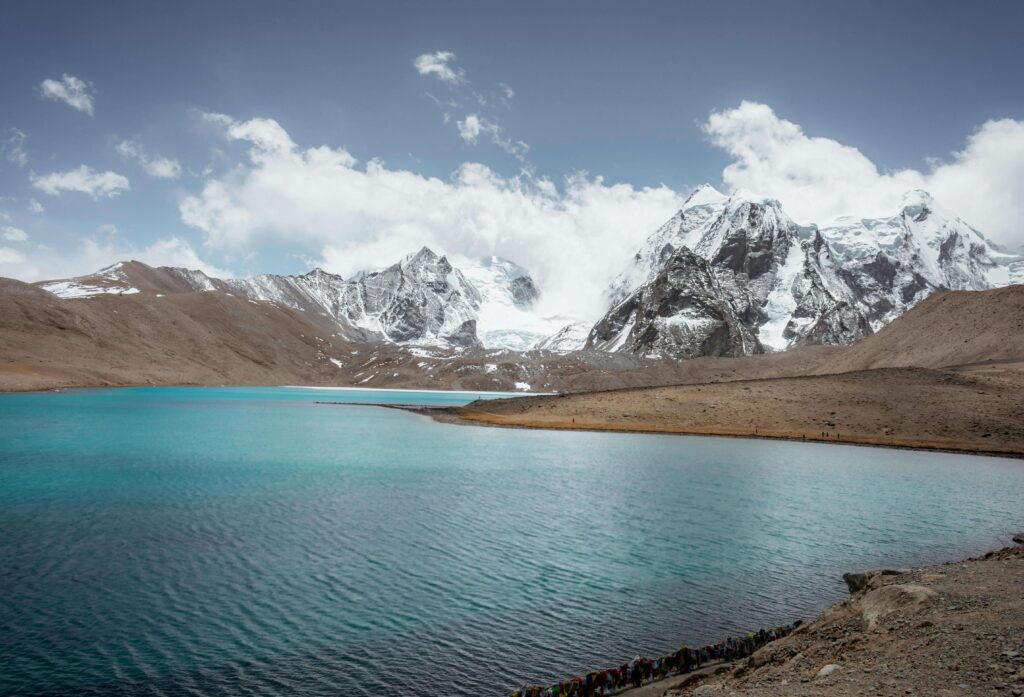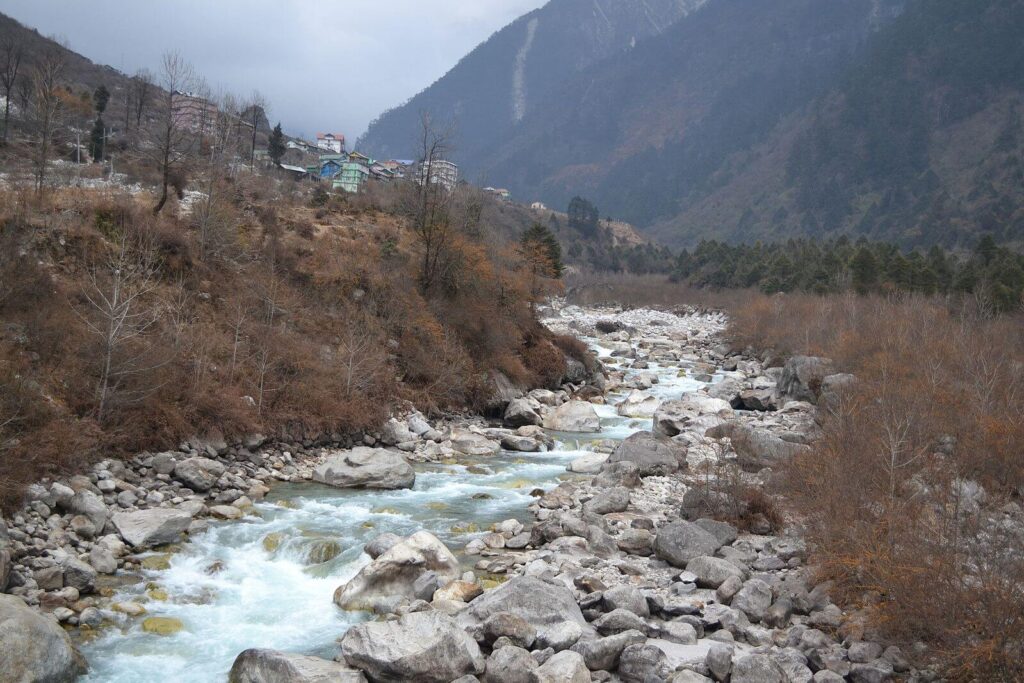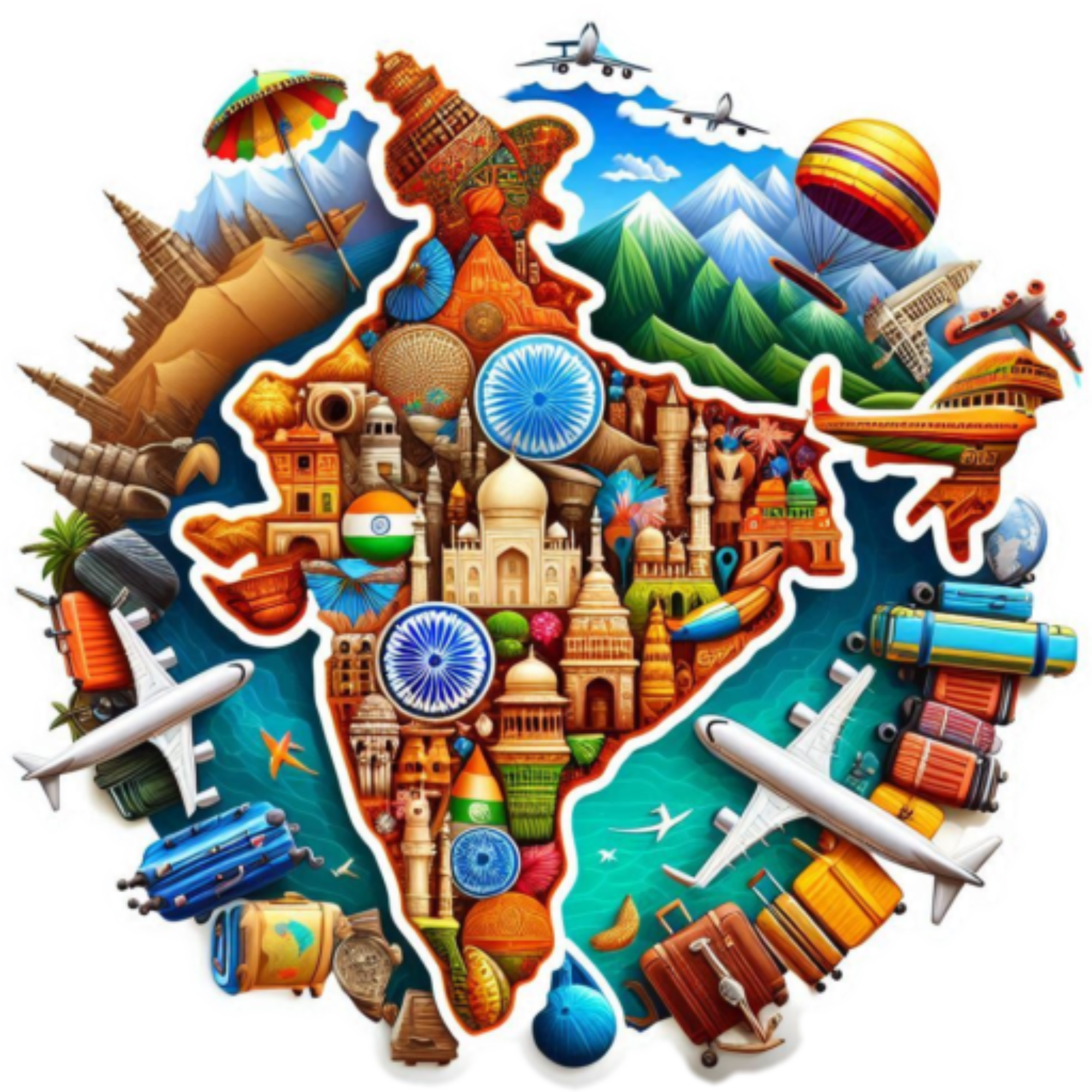Where is Gurudongmar Lake?
Gurudongmar Lake is situated in the northern part of Sikkim, a picturesque Himalayan state in India. Nestled at an altitude of 5,425 meters (17,800 feet), it ranks as one of the highest lakes in the world. Within India, it holds the distinction of being the second-highest-altitude lake, surpassed only by its nearby counterpart, Tso Lhamo Lake (also known as Cholamu Lake), which stands at 5,486 meters (18,000 feet).
The lake is located approximately 190 kilometres north of Gangtok, the state capital, and just 5 kilometres south of the Indo-Tibetan (China) border.

Why is Gurudongmar Lake Famous?
Gurudongmar Lake holds significant spiritual value for both Buddhists and Sikhs alike. It was named after Guru Padmasambhava, commonly referred to as Guru Rinpoche, who is celebrated as one of the three founders of Tibetan Buddhism. The lake’s serene beauty and spiritual significance draw visitors from around the world.
Its pristine beauty and the mythical nature has made Gurudongmar Lake viral on the social media.
Why Does Gurudongmar Lake Never Freeze?

Legend has it that the local inhabitants struggled with the scarcity of fresh water at such high altitudes. To alleviate this issue, Guru Rinpoche bestowed his blessings upon the lake, ensuring that its waters do not freeze even during the harshest winters.
A similar tale surrounds Guru Nanak Sahib, who visited this region during his travels to northeastern India. He is said to have assisted both the local king and the peasantry, further enhancing the lake’s spiritual significance.
Additionally, locals believe that the lake possesses divine powers capable of granting fertility to couples who visit and worship there. This belief adds a unique aspect to Gurudongmar Lake’s allure, drawing not only nature enthusiasts but also those seeking spiritual blessings.
What is the Mystery of Gurudongmar Lake?
The origin of Gurudongmar Lake remains shrouded in mystery, as no geological research has definitively established its beginnings. It appears to have emerged suddenly at such a high altitude and, as previously mentioned, it notably never freezes completely. For sceptics, the lake’s origin and geological phenomenon continue to be an enigma awaiting discovery.
What is the Best Time to Visit Gurudongmar Lake?
Given below is the monthly climatic date of the sorrounding areas of Gurudongmar Lake Region.
| Variables | Unit | Jan | Feb | Marc | Apr | May | Jun | Jul | Aug | Sep | Oct | Nov | Dec |
|---|---|---|---|---|---|---|---|---|---|---|---|---|---|
| Max Temp | °C | -3 | -2 | 0 | 3 | 5 | 9 | 10 | 11 | 10 | 6 | 2 | -1 |
| Min Temp | °C | -9 | -8 | -6 | -2 | 1 | 5 | 7 | 7 | 5 | 0 | -5 | -7 |
| Max Temp | °F | 27 | 29 | 33 | 38 | 42 | 48 | 51 | 52 | 51 | 42 | 35 | 30 |
| Min Temp | °F | 16 | 18 | 21 | 28 | 34 | 41 | 45 | 44 | 41 | 32 | 24 | 19 |
| Precipitation | mm | 266 | 300 | 347 | 222 | 161 | 256 | 413 | 350 | 204 | 158 | 175 | 201 |
| Humidity | % | 75 | 79 | 83 | 88 | 89 | 92 | 93 | 91 | 89 | 84 | 79 | 76 |
| Rainy Days | Number | 20 | 18 | 20 | 19 | 19 | 21 | 22 | 22 | 20 | 20 | 18 | 20 |
Average Sun Hours between 2 (July) to 4.6 (April)
The ideal time to visit Gurudongmar Lake is during the Indian spring and summer months, specifically from March to June. During this period, the skies are typically crystal clear, and the landscape is adorned with lush greenery and vibrant flowers. While temperatures hover around ±5 °C, this is the most favourable time to experience the beauty of the lake. With proper preparation, visitors can fully enjoy the stunning and sacred atmosphere of Gurudongmar Lake.
You may want to read more on Best Time to Visit India to know plan your trip to other parts of the country.
Oxygen Levels at Gurudongmar Lake
Given the high elevation of Gurudongmar Lake, the question of its oxygen level is a natural one. The answer is that the oxygen level is lower than normal and fluctuates depending on the season. For context, at sea level, the oxygen concentration is 21%. At Everest Base Camp in Nepal, which is located at 5,364 meters (17,598 feet) above sea level, the oxygen level is about 50% of what it is at sea level. Gurudongmar Lake, however, sits at an even higher elevation, meaning the oxygen level is significantly lower, which can pose a challenge for travellers. This is an important factor to consider when planning a trip to the area.
What Permits Are Required for Visiting Gurudongmar
Due to its proximity to the international border, visitors to Gurudongmar Lake and its surrounding areas must obtain prior government authorization. Domestic tourists need to apply for a Protected Area Permit (PAP), which can be obtained in Gangtok, the capital of Sikkim. To apply for the PAP, you will need to submit a photocopy of your ID proof (Voter ID or Passport) and two recent passport-sized colour photographs.
Currently, foreign nationals are not allowed to visit Gurudongmar Lake. However, they are permitted to visit nearby locations such as Lachen and Yumthang with the necessary permits, including the Inner Line Permit (ILP) or Restricted Area Permit (RAP). The Sikkim Government Website is the best resource for up-to-date information on permit requirements.
It’s important to note that the policy regarding foreign visitors to Gurudongmar is subject to change, and there have been instances where international tourists have been granted access. Permits can be obtained at the Gangtok Tourism Office or the District Administrative Centre.
Quick Information on Permits (subject to change):
Citizens of Pakistan, China, Myanmar, and Nigeria require special permission from the Ministry of Home Affairs, Government of India.
The ILP/RAP is valid for 30 days.
The PAP is valid for 7 days.
What Precautions to Take When Visiting Gurudongmar Lake
- Children and the Elderly Should Avoid Visiting: Due to the high altitude and extreme conditions, it is advised that children under the age of 5 and elderly individuals avoid visiting Gurudongmar Lake.
- Verify Permit Requirements: Always check with local authorities for any recent changes to the permit requirements. Make sure to carry a valid ID and two recent passport-sized photographs when applying for permits.
- Monitor Road Conditions: Road conditions in the region can be unpredictable due to frequent landslides and strong winds. Always check for the latest updates on accessibility before travelling.
- Prepare for Low Oxygen Levels: Gurudongmar Lake is located at a high altitude, so it’s important to be prepared for reduced oxygen levels. Monitor your health and be aware of symptoms of altitude sickness, even if you typically don’t experience motion sickness.
- Pack Warm Clothing: The weather can be very cold, even during the day. Make sure to pack sufficient warm clothing, including extra warm socks, snow boots, and headgear. Many visitors overlook protecting their heads and feet, which can lead to serious discomfort.
- Plan Your Visit Carefully: It is recommended to visit during the midday hours and leave immediately after, to avoid being caught in the evening cold and potential weather changes.
Things to Do at Gurudongmar Lake
For many travellers, visiting Gurudongmar Lake is a bucket-list experience, thanks to its growing popularity. If you’re one of them, take the time to enjoy the stunning surroundings. Admire the pristine, crystal-clear water, framed by snow-capped mountains, and capture plenty of photos with the iconic yaks that roam the area.
For avid trekkers, Gurudongmar offers excellent opportunities for exploring glaciers and high-altitude terrain. If you’re up for it, you can stay in the area (after conducting the necessary due diligence) for a few days to explore local villages and sample traditional Sikkimese cuisine.
Nearby Lachung, the closest village to the lake, is also worth a visit. From there, you can head to Zero Point to enjoy breathtaking panoramic views of the Himalayas.
Another notable site is the Sarva Dharma Sthala, a spiritual centre built by the Indian Army, which promotes unity among all religions.
For wildlife enthusiasts, the region is home to a variety of high-altitude fauna, including yaks and blue sheep, making it a fantastic destination for nature lovers.
How to Reach Gurudongmar Lake

To reach Gurudongmar Lake, you must first travel to Gangtok, the capital of Sikkim. From Gangtok, your next stop is Lachen, where you will need to plan for an overnight stay. The journey from Lachen to Gurudongmar typically takes around 5 hours on a regular day.
The nearest commercial airport to Gangtok is Bagdogra (IXB) in West Bengal, located about 4 hours by road from Gangtok. There are plenty of taxi services available in Bagdogra for point-to-point travel or long-term hires.
Bagdogra Airport is well-connected, with six daily flights from Kolkata (SHL). Travellers from major cities like Delhi or Mumbai usually fly directly to Bagdogra and then take a scenic road route along the Teesta River to reach Gangtok. There are eight non-stop flights daily from Delhi (DEL) to Bagdogra and two from Mumbai (BOM).
For rail travellers, the nearest railway station to Gurudongmar is New Jalpaiguri, also in West Bengal. New Jalpaiguri and Bagdogra are neighbouring towns, so taxis from both locations to Gangtok are readily available.
We welcome recent travellers to Gurudongmar, as well as locals, to share any updated information or unique insights that could enhance this guide and help your fellow travellers.




Pingback: Backpacking to India: Here's how to plan it well - Traveling to India?